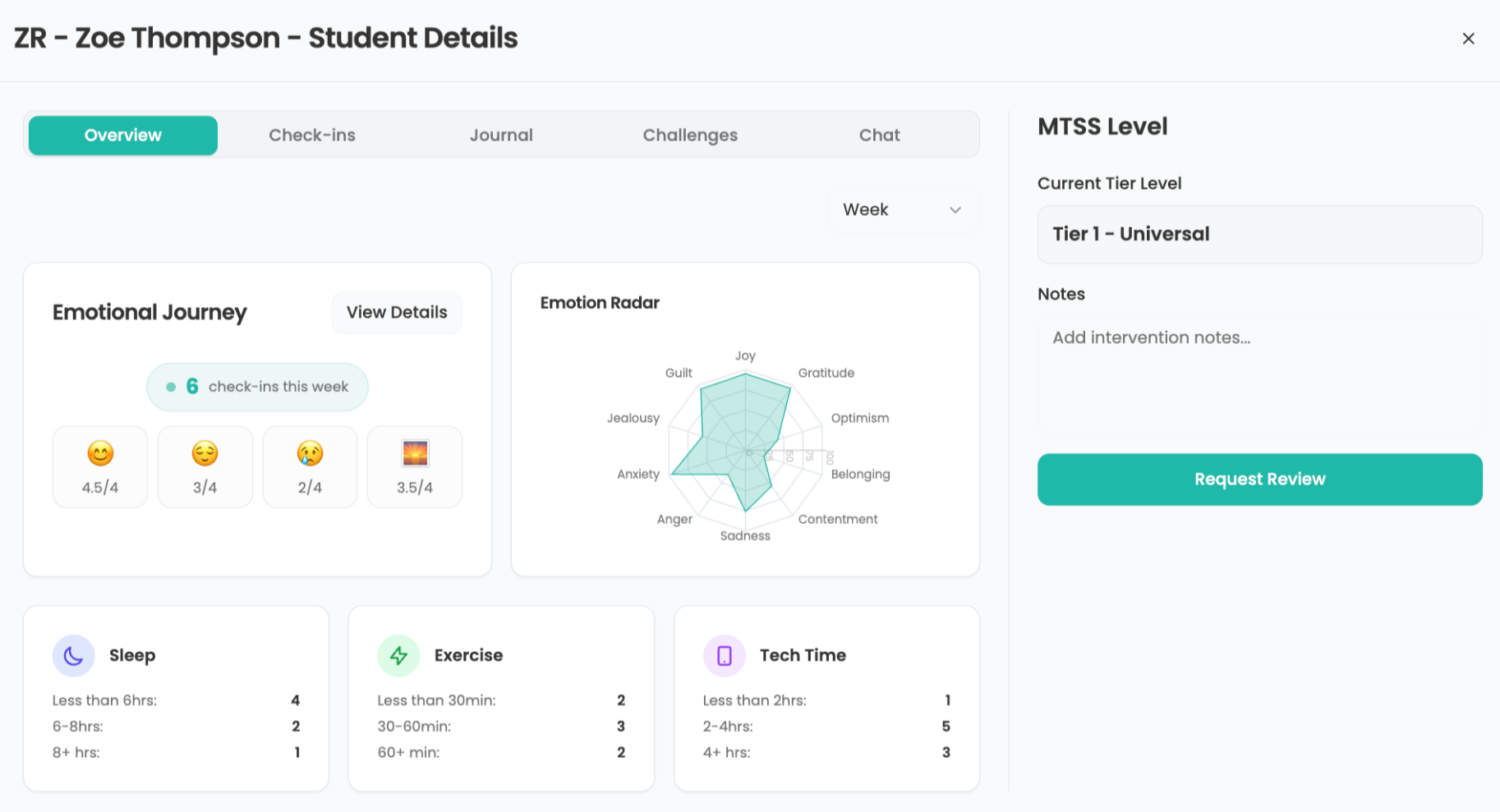Best Multi-Tiered System of Support Resources
Find out how to use MTSS to support student learning and development

A multi-tiered system of support (MTSS) is a framework designed to guide schools and teachers in providing important academic, social-emotional, and behavioral support to all students. MTSS is designed so that students of varying needs and abilities in the same classroom can all benefit from its structured services.
The following MTSS resources, lessons, and activities will allow educators and school administrators to deepen their understanding of MTSS and put it into effect at the classroom level.
A Comprehensive Guide to MTSS
This complete Panorama Education guide is a terrific place to start if you’re still wondering “What does MTSS stand for?” Want to go even deeper? Take the free Panorama Learning Center MTSS certificate course, which covers how to implement MTSS to boost progress for every student in a school or district.
Academic Success for All Students: A Multi-Tiered Approach
What does Tier 1, 2, or 3 instruction look like in a K-12 school? Watch as teachers and students from the P.K. Yonge Developmental Research School put the principles of MTSS into action in the classroom.
Developing a successful MTSS/RTI Team
Understanding MTSS is only the first step. Next, administrators must assemble the team who will carry out the MTSS implementation. This article details the roles and responsibilities of MTSS team members, as well as suggesting what characteristics they should possess.
Building A Multi-Tiered System of Supports (MTSS) Framework for Mental Health
Educator and Tech & Learning senior staff writer Erik Ofgang looks at a few key steps schools can take to establish and implement MTSS.
Explaining SEL to Parents
Social-emotional learning has become a divisive topic recently. Yet, research has shown that parents broadly support SEL skills while disliking the term. This article details how to explain your school’s SEL program to parents, with an emphasis on how it helps kids learn.
Tools and ideas to transform education. Sign up below.
Trauma-Informed Teaching Strategies
According to a 2019 Centers for Disease Control study, a majority of American children have faced traumas such as abuse, neglect, natural disaster, or experiencing/witnessing violence. Trauma-informed teaching helps teachers understand and manage relationships with students who’ve been traumatized. This article by behavior analyst and educator Jessica Minahan offers great practical ideas for enabling trauma-informed teaching in any classroom.
Share my Lesson
Explore these social-emotional education lessons designed and tested by your fellow teachers. Nearly every topic is represented, from the arts to math to language and culture. Search by grade, topic, type of resource, and standards.
Connect your Classroom
Connecting with kids from other cultures offers an excellent opportunity to foster empathy and understanding. The not-for-profit Kind Foundation provides a free communications tool that lets teachers expand their students’ world via secure video, messaging, and file-sharing technology. Empatico was a winner in Fast Company‘s 2018 World Changing Ideas Awards.
Developing an RTI plan
A step-by-step guide to implementing a response to intervention (RTI) model. Includes PDF resources covering beliefs, skills, problem solving, and documenting interventions.
Personalizing Support With Response to Intervention
A profile of the Charles R. Drew Charter School’s successful use of RTI to improve student achievement, this Edutopia article describes the school’s intensive early-elementary RTI and Tier 3 instruction model. It’s brimming with useful tips and ideas, from creating engaging activities to reducing the stigma of Tier 3.
Guiding Students to Success at Their Own Level
Fascinating case study of how Meyer Elementary School in Michigan effectively applied an RTI framework across the entire school, shrinking the achievement gap between the highest- and lowest-achieving students.
TK California: Social-Emotional Development
A social-emotional primer for pre-K teachers. Learn how teachers can boost kids’ social-emotional development through positive relationships and best practices in the classroom. Bonus: Printable Seven Social-Emotional Teaching Strategies PDF.
K-12 Wheel of Emotions
Strong emotions can be unsettling to children, causing them to act out inappropriately or isolate from others. Learn how to use an emotion wheel to help kids identify and explore their feelings. These emotion wheel lessons and activities were created and field-tested by your fellow teachers and are searchable by grade, standard, rating, price (many are free!), and subject.
Best Practices for Trauma-Informed Teaching
Dr. Stephanie Smith Budhai explores six ways teachers can bring a trauma-informed perspective into their classrooms, including mindfulness, virtual healing spaces and journaling.
Team-Building Games and Activities for Kids
“Now, children, it’s time for our MTSS activities. Doesn’t that sound fun?” said no teacher, ever. While not strictly speaking MTSS, team-building activities are a great way to promote positive feelings and relationships in your classroom. Dozens of diverse activities range from balloon walking to newspaper fashion show to group juggle. Fun for all.
Hanover Research: Trauma-informed Instruction
A research-based brief that provides both academic background and practical strategies to help teachers build relationships and support students who are experiencing trauma.
Tech & Learning editor and contributor since 2010, Diana is dedicated to ferreting out the best free and low-cost tech tools for teachers.
